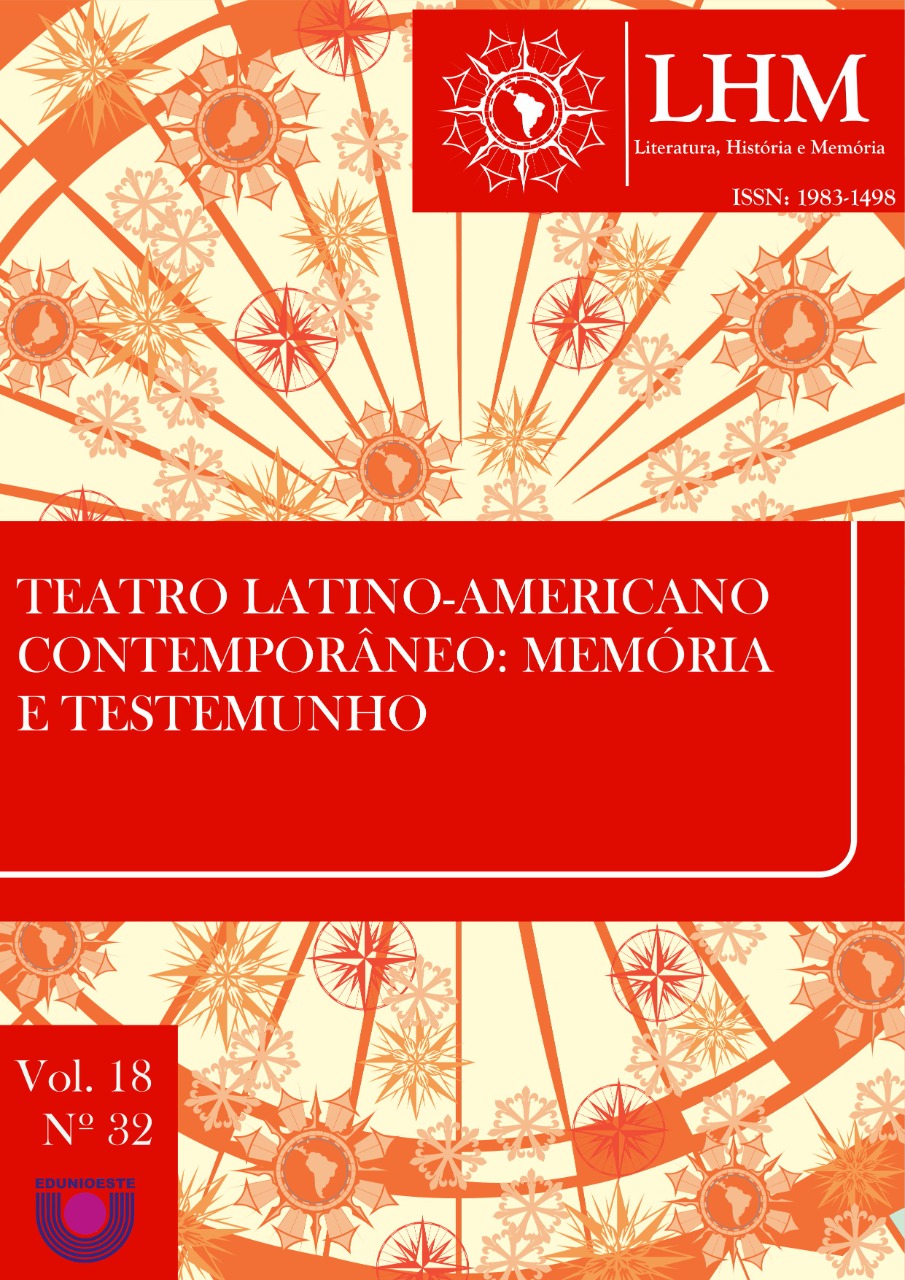Reader, readings and intertextuality in Fedra y otras griegas, by Ximena Escalante
DOI:
https://doi.org/10.48075/rlhm.v18i32.29639Abstract
This paper intends, firstly, toestablish a relationship between the process of reading and writing a work, showing how the figure of the reader is present in its elaboration. It also tries to capture and analyze the procedures employed by the Mexican playwright Ximena Escalante in the composition of her drama Fedra y otras griegas, as well as the articulations and extensive dialectical network between her Phaedra and those of other playwrights such as Seneca and Racine. For this, we used the concept of intertextuality as strategy to investigate such procedures. In this “modern” Phaedra we have a new version of the myth, or rather, myths engraved in individual and collective memory. The return to it is seen heremainly as a return to other texts that communicate widely with each other, revitalizing and creating a movement of multiple readings. The re-readings and (de)constructions of the work suggest the longevity of the original text/myth, expanding its echo in different literary and historical movements, adding new references. The staging or performance art in Ximena Escalante's text is something that challenges the form itself, which also point out the crisis of representation at the identity and memorialistic level. We conclude that in Fedra y otras griegas, the literary procedures usedin the conception of the work (especially in the field of reading and intertextuality/dialogism) are more important than its own plot, a predominant characteristic in the aesthetic model of contemporary literature.
Downloads
Published
How to Cite
Issue
Section
License

This work is licensed under a Creative Commons Attribution-NonCommercial-ShareAlike 4.0 International License.
Aviso de Direito Autoral Creative Commons
Política para Periódicos de Acesso Livre
Autores que publicam nesta revista concordam com os seguintes termos:
1. Autores mantém os direitos autorais e concedem à revista o direito de primeira publicação, com o trabalho simultaneamente licenciado sob a Licença Creative Commons Attribution que permite o compartilhamento do trabalho com reconhecimento da autoria e publicação inicial nesta revista.2. Autores têm autorização para assumir contratos adicionais separadamente, para distribuição não-exclusiva da versão do trabalho publicada nesta revista (ex.: publicar em repositório institucional ou como capítulo de livro), com reconhecimento de autoria e publicação inicial nesta revista.
3. Autores têm permissão e são estimulados a publicar e distribuir seu trabalho online (ex.: em repositórios institucionais ou na sua página pessoal) a qualquer ponto antes ou durante o processo editorial, já que isso pode gerar alterações produtivas, bem como aumentar o impacto e a citação do trabalho publicado (Veja O Efeito do Acesso Livre).
Licença Creative Commons
Esta obra está licenciada com uma Licença Creative Commons Atribuição-NãoComercial-CompartilhaIgual 4.0 Internacional, o que permite compartilhar, copiar, distribuir, exibir, reproduzir, a totalidade ou partes desde que não tenha objetivo comercial e sejam citados os autores e a fonte.


